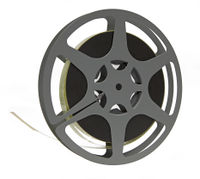16 mm movies
Dan Tobias (Talk | contribs) (→References) |
|||
| (One intermediate revision by one user not shown) | |||
| Line 2: | Line 2: | ||
|formattype=physical | |formattype=physical | ||
|subcat=Photographic film | |subcat=Photographic film | ||
| + | |image=16mmfilm.jpeg | ||
| + | |caption=16 mm archival reversal film | ||
}} | }} | ||
| Line 16: | Line 18: | ||
* [http://boingboing.net/2013/03/12/the-day-my-grandfather-groucho.html?utm_source=dlvr.it The Day My Grandfather Groucho and I Saved ‘You Bet Your Life’] | * [http://boingboing.net/2013/03/12/the-day-my-grandfather-groucho.html?utm_source=dlvr.it The Day My Grandfather Groucho and I Saved ‘You Bet Your Life’] | ||
* [http://www.mirror.co.uk/tv/tv-news/106-doctor-who-episodes-uncovered-2343474 Over 100 long-lost Doctor Who episodes found by dedicated fans - in Ethiopia] | * [http://www.mirror.co.uk/tv/tv-news/106-doctor-who-episodes-uncovered-2343474 Over 100 long-lost Doctor Who episodes found by dedicated fans - in Ethiopia] | ||
| + | * [http://www.loc.gov/preservation/resources/rfs/movimg.html Library of Congress Recommended Format Specifications: Moving Image Works] | ||
Latest revision as of 22:44, 16 September 2014
16 mm movies are a motion picture film format with a film strip that is 16 millimeters wide. The principal versions are: standard 16 mm film (with a picture size of 10.26 mm by 7.49 mm; versions exist with perforations on both sides, and with single-side perforation leaving space at the other side for a soundtrack), Super 16 mm (or Type W; it has single-side perforation without a soundtrack, suppoting a 7.41 mm by 12.52 mm picture size), and Ultra 16 mm (which uses the space between the perforations for additional image space, totalling 11.66 mm by 6.15 mm).
While the format was originally developed for amateur use, 8 mm movies proved more popular for home movies due to lower cost and more compact size, but 16 mm movies got wide use for educational and industrial use (schools and workplaces often had projectors of this format for showing films to students and workers) and for television programs (many were filmed in 16 mm, and the format was also used to distribute programs for broadcast and to archive old programs). Sometimes when "lost episodes" of old TV shows (e.g., Doctor Who) are discovered, they are in this format, sometimes surviving in the collections of private collectors after being discarded by the original networks, stations, or studios.
Theatrical releases, however, generally used 35 mm movies for their higher picture quality.
